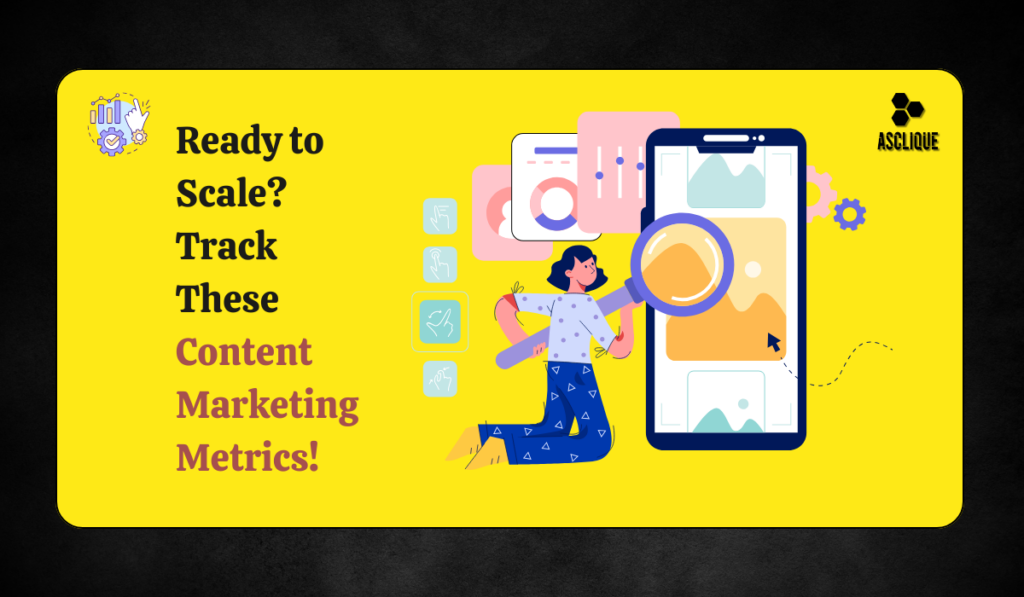To write valuable content is very important, but it forms just one part of the entire content marketing wheel. All that really matters is how much you can gauge its performance, glean insights, and shape the change in your strategy. For that, there are content marketing metrics.
This guide will take you through the most critical content marketing metrics and will break them down by clear category for ease of implementation. It helps you make data-based decisions to support business goals.
Why Content Marketing Metrics Matter
Tracking the right metrics helps content marketers and businesses:
- Be aware of content that is performing on the higher end
- Identify the works that are on the lower end, which require optimization
- Justify content marketing expenditures with ROI
- Make informed decisions based on actual data
- Improve customer experiences and content effectiveness
In short, content metrics are the bridge between putting in the effort and seeing the result. Without them, you could be guessing, but with them, you can grow.
Types of Content Marketing Metrics
To simplify the landscape, content marketing metrics can be grouped into the following key categories:
- Traffic Metrics
- Engagement Metrics
- SEO Metrics
- Lead Generation Metrics
- Revenue and ROI Metrics
Let’s explore each category in detail.
Traffic Metrics
Traffic metrics keep track of how many visitors view your content and where they came from. These metrics lay the foundation for performance analysis and are indicators of your reach and visibility.
Key Metrics
- Pageviews: The number of times a user loads a content page in total.
- Unique Users: Distinct users view a content page during the predetermined time slots.
- Traffic Sources: Where your traffic comes from, such as organic, direct, referral, social media, or paid ads.
- New vs. Returning Visitors: A detailed breakdown for all visitors to your site during a first visit versus others returning.
Why Is It Important:
Understanding traffic enables you to identify the best-performing content, their useful channels, and the growth of your audiences over time.
Recommended Tools:
Google Analytics, Matomo, HubSpot
Engagement Metrics
These metrics show how users interact with different pieces of content. They tell you whether your audience likes what he has presented or if there are areas requiring improvement.
Key Metrics
Average Time on Page: Indicates how long users are staying on your content.
Bounce Rate: The share of single-page users leaving the site.
Pages Per Session: Measured in pages visited by a single person during one visit
Scroll Depth: This metric shows how far users move down the page, which indicates content consumption.
Social Shares, Likes, and Comments: Indicates how many times your content has been shared or interacted on social media platforms.
Why It Matters:
More often than not, higher engagement means quality and relevance; less engagement could mean there are structural issues, or lack of clarity, or value in the content.
Recommended Tools:
Google Analytics, Hotjar, Crazy Egg, native social media insights.
SEO Metrics
If your content is part of organic search strategies, then SEO metrics enable measuring visibility, discoverability, and authority.
Key Metrics:
- Organic Traffic: Visitors coming to your site from unpaid search engine results.
- Keyword Rankings: How your content ranks over time for targeted keywords.
- Backlinks: Number and quality of websites externally linking to your content.
- Click-Through Rate (CTR): Percentage of users who click your link after viewing it on search engine results.
- Index Coverage: If your content is being indexed accurately by search engines.
Why It Matters:
SEO metrics demonstrate taking the target from the search engines to the content, into the limelight of the backlink-the distance.
Tools Recommend:
Google Search Console, Ahrefs, SEMrush, Moz.
Lead Generation Metrics
This is critical for lead generation content. These metrics express how effectively the content can facilitate the user movement further down the funnel.
Key Metrics:
- Conversion Rate: The percentage of visitors completing the desired action like sign-up or filling out a form.
- Leads Generated: Qualified leads collected through gated content or landing pages, or calls to action.
- Email Sign-ups: A count of new subscribers added to the email list through content forms or popups.
- Cost Per Lead (CPL): Total cost of content creation and promotion divided by the number of leads generated.
Why It Matters:
Lead generation metrics measure the business value of the content and help refine offers, landing pages, and CTAs for maximum performance.
Recommended Tools:
HubSpot, ConvertKit, Mailchimp, Google Tag Manager
Revenue and ROI Metrics
These metrics identify a clear link between content marketing and its financial results; thus, these metrics account for the demonstration of long-term value.
Key Metrics:
- Customer Acquisition Cost (CAC): The total cost of marketing divided by the number of new customers secured.
- Customer Lifetime Value (CLV): The estimated revenue a customer is likely to generate over the course of the relationship with the business.
- Content ROI: [(Revenue generated – Cost of content) / Cost of content] X 100
- Attribution Paths: Tracks how the content helps in conversion through multiple touchpoints within the customer’s journey.
Why It Matters:
These metrics quantify returns, justify budget allocation, and align content marketing with overall business objectives.
Recommended Tools:
CRMs, Google Analytics (with attribution modeling), HubSpot.
Setting Benchmark and Aspiration
Tracking metrics is only useful if you benchmark them against goals. Consider the following when setting performance targets:
- Past performance (historical data)
- Industry averages or competitors
- Specific campaign goals (traffic, conversions, brand awareness)
Establishing clear benchmarks helps evaluate success and pinpoint where to optimize.
How to Choose the Right Metrics
Not every metric matters for every campaign. Select metrics based on:
- Content purpose: Awareness, engagement, lead generation, sales
- Stage of the funnel: Top (traffic), middle (engagement, leads), bottom (sales)
- Actionability: Can the metric help guide a specific decision?
Avoid “vanity metrics” like raw pageviews or likes unless they are tied to larger objectives.
Conclusion
Successful content marketing is backed by sound strategy and good measurements. By tracking revenue and lead metrics, in tandem with traffic, engagement, and SEO metrics, we get to see in detail how well our content performs and how we can fine-tune it from there.
Measuring is only half the job; knowing how to measure what matters, interpreting the results, and acting on those interpretations is the other half. Those metrics are going to help steer your content, help hold it accountable, and help it serve well toward your business objectives.
FAQs
What do you think the main metric in content marketing is?
It depends on your aims—traffic for awareness, leads for conversion, ROI for sales impact.
How often should I track these metrics?
One should track them every week for ongoing activities, while strategy-oriented insights can be derived on a monthly or quarterly basis.
What separates vanity and actionable metrics?
Vanity metrics tell you success at a very surface level; actionable metrics guide you in making real improvements.
How do I measure ROI of content?
This can be calculated with the formula: (Revenue – Cost) / Cost × 100; this gets you the ROI percentage.
What tools are available to track the performance of content?
Tools available for the purposes of tracking would be Google Analytics, Search Console, HubSpot, SEMrush, and Hotjar.

